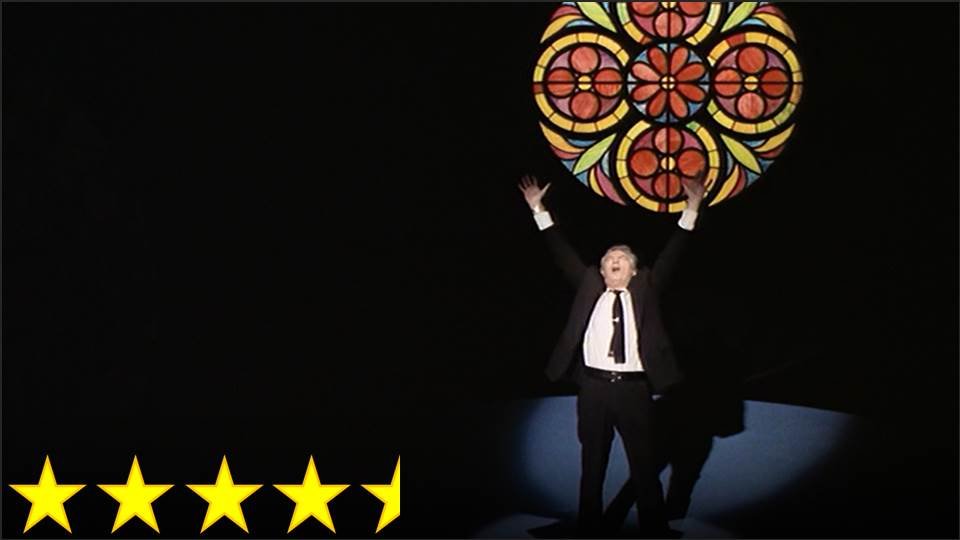I’d like to talk about a French movie called La Haine. Easily one of the most historically significant French films of the last 25 years, La Haine (or Hate) tells the story of young men of different ethnic backgrounds living in one of the poorest parts of France who are the victims of police brutality. While the American tendency is to make all characters that the audience is expected to read as “victim type characters” very nice, sweet, and innocent, this film has a brutal realism to it – the characters are not the loveliest people.
They are very aggressive, rude, profane, and obsessed with drugs and guns. The only jokes they know how to tell involve having sex somebody’s mother or sister. They are wrapped up in maintaining an impossible self-image of pure masculinity, never showing weakness, always being ready to shoot anyone who stands in their way. While I can’t relate to them much, I do feel for them: their attitudes, interests, and behaviors are all part of a persona they feel they must assume in order to stand up to unjust authorities – a persona thrust upon them by American pop culture.
While a variety of artists, films, and film genres clearly affected the film and/or the characters in it, the only movie I recall being cited explicitly as a source of self-image for these kids is Martin Scorsese’s Taxi Driver. The famous “You talkin’ to me?” scene (in addition to the scene pictured below) is performed by a character in this film who feels like he has no power and no future – all he has is the fantasy of pulling out a gun like Robert De Niro and shooting a cop. I think that’s because the purpose of Taxi Driver is to resonate with people who just want to be masculine, dominant men, which is why the whole film is nothing but a showcase of what masculinity looks like without the “fun parts.” Without the fast cars, monster trucks, explosions, wild sex, rocking out, and sports games, all that’s left to make a movie manly is precisely the contents of Taxi Driver – no more, no less.
The plot concerns a retired war veteran returning to his home city in America and trying to find a way to readjust – a clever nod not only to the contents of films noir but also to the historical phenomenon that film historians/theorists propose prompted the film noir genre. He becomes a taxi driver and sees a variety of strange characters and concerning events, which Scorsese used to show us the darkness of New York on a level that few other directors have been able to achieve. Then he stalks a woman, so that’s not good. Then he and that woman attempt to have a romantic relationship, but it doesn’t go very well. Then he buys a bunch of guns and decides to become a vigilante, hoping to rescue a very, very young prostitute from her situation.
The number of events in the story are few, although they happen over the span of a rather long, slow movie, and there aren’t many engaging twists and turns in the story, so what gives? Why is this movie considered so great? I already mentioned the film noir references, and I think a lot of people admire the lengths to which Scorsese goes to show how awful a place New York City can be, all without losing the sense of realism. People also surely like Scorsese’s ability to use very subtle camerawork to create a unique style of uneasy “swaying” that makes the viewer feel continuously unsettled. It’s all apart of the idea that great filmmakers aren’t the ones who follow the Hollywood formula really well to please a large audience. The great director, it is believed, is one who comes up with his/her own distinct ideas for specific events, moments, vignettes, and characters he/she wants the audience to see, then carefully crafts them with clever dialogue and unconventional cinematography, then packages them together in just the right order to give the audience the experience he/she wants.
That’s not quite my idea of a great film – it’s close, but it’s not quite there. At the end of the day, film is a communication medium, and that means I can’t only look at how well the filmmaker uses the channel of communication (the channel being video) – I have to look at the value of that which is being communicated. I think the reason why I like the show Louie more than Taxi Driver, even though Louis C. K. meets that same definition of a great director I offered in the previous paragraph in Louie, is that Louis is expressing something that speaks to my values and showing me things I would want the whole world to see. He shows life in the rotten parts of the city from a perspective that makes sense to me. I can’t say that for the popular Scorsese films, which seem to approach the world from the perspective of an animal rather than a rational agent.
I really don’t know how to care very much about what happens in the movie, so it’s hard for me to care about the movie. I don’t really connect much with the characters, and based on this film I don’t think I connect much with Scorsese either. The only people who do connect with either of them through this film, I estimate, are people who enjoy their own manliness too much. I can greatly appreciate the interesting character studies, the fascinating exchanges between the (very different) characters, and the craftsmanship involved here – I’m really glad that Scorsese showed me so many things that so few people have ever seen before on or off the screen – but that’s not enough. It simply doesn’t resonate with me.



